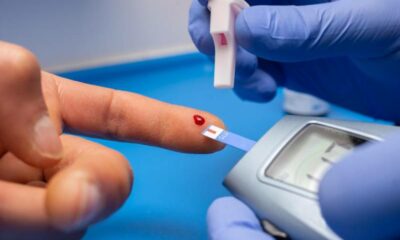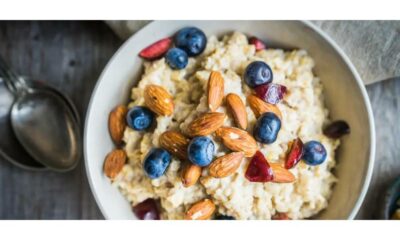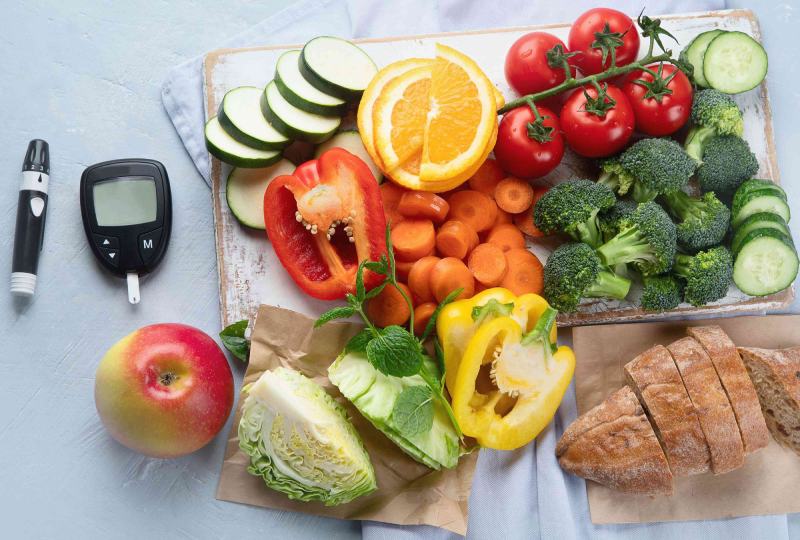Diabetes is a chronic condition affecting millions worldwide. It disrupts the body’s ability to regulate blood sugar (glucose) levels, leading to a variety of complications if left unmanaged. Fortunately, dietary choices play a crucial role in managing diabetes. Here’s where the concept of the Glycemic Index (GI) comes in.
This guide delves into the top 10 low-GI foods for effective diabetes management. It explores the science behind GI, its benefits, and how to incorporate these powerhouses into your diet for optimal health.
Understanding the Glycemic Index (GI)
The GI is a ranking system that assigns a value to carbohydrate-containing foods based on their impact on blood sugar levels. Foods with a high GI cause a rapid rise in blood sugar, while low-GI options lead to a slower, more gradual increase. This distinction is vital for individuals with diabetes, as managing blood sugar spikes is crucial for overall health.
Benefits of a Low-GI Diet for Diabetes Management
- Improved Blood Sugar Control: Low-GI diets promote stable blood sugar levels, reducing the risk of hyperglycemia (high blood sugar) and its associated complications.
- Enhanced Satiety: Low-GI foods are often high in fiber, which keeps you feeling fuller for longer, aiding in weight management, a crucial aspect of diabetes control.
- Reduced Risk of Long-Term Complications: Consistent blood sugar control helps minimize the risk of diabetes-related complications like neuropathy, cardiovascular disease, and kidney problems.
Top 10 Low-GI Powerhouses for Diabetes Management
- Non-Starchy Vegetables (GI: 15-50): Vegetables are the foundation of a healthy diabetic diet, and non-starchy options like leafy greens (spinach, kale), broccoli, cauliflower, and bell peppers boast low GI scores. They are packed with essential vitamins, minerals, and fiber, promoting overall well-being.
- Low-GI Fruits (GI: 30-55): Fruits are a natural source of sweetness, but not all are created equal. Berries (strawberries, blueberries, raspberries), apples, pears, and grapefruits have a low GI, allowing you to enjoy their sweetness without significant blood sugar spikes.
- Legumes (GI: 25-50): Beans, lentils, and chickpeas are nutritional powerhouses. They are rich in protein, fiber, and various vitamins and minerals. Their low GI makes them a perfect addition to soups, salads, and stews, promoting satiety and stable blood sugar control.
- Nuts & Seeds (GI: 15-30): Nuts and seeds offer a concentrated source of healthy fats, protein, fiber, and essential vitamins and minerals. Almonds, walnuts, flaxseeds, and chia seeds are all excellent low-GI choices for snacking or adding a nutritional boost to meals.
- Whole Grains (GI: 35-55): Whole grains are a crucial source of complex carbohydrates, fiber, and various nutrients. Opt for whole-wheat bread, brown rice, quinoa, oats, and barley over refined grains like white bread and pasta. These whole-grain options offer sustained energy and promote healthy blood sugar levels.
- Low-Fat Yogurt (GI: 30-40): Unsweetened or minimally sweetened plain yogurt is a fantastic low-GI source of protein, calcium, and probiotics. It can be enjoyed on its own or paired with berries and nuts for a satisfying and nutritious snack.
- Fatty Fish (GI: 0): Fatty fish like salmon, tuna, and mackerel boast a GI of zero as they contain minimal carbohydrates. They are rich in omega-3 fatty acids, which offer numerous health benefits, including reducing inflammation and enhancing heart health, crucial for individuals with diabetes.
- Eggs (GI: 0): Eggs are another low-GI, protein-rich option. They are incredibly versatile and can be enjoyed for breakfast, lunch, or dinner. Eggs promote satiety and help regulate blood sugar levels.
- Healthy Fats (GI: 0): Healthy fats, like those found in avocados, olive oil, and nuts, have a negligible impact on blood sugar. They are essential for satiety, nutrient absorption, and overall health. These fats can be incorporated into your diet through cooking with olive oil, adding avocado slices to salads, or including nuts in your meals.
- Unsweetened Beverages (GI: 0): Water, unsweetened tea, and black coffee have a GI of zero as they contain minimal to no carbohydrates. Staying hydrated is essential for overall health and blood sugar control.
Conclusion
Living with diabetes can be empowering. By incorporating low-GI foods into your diet, maintaining a healthy lifestyle, and working with your healthcare team, you can effectively manage your blood sugar levels and live a fulfilling life. Remember, this guide is a starting point. Consult your doctor or registered dietitian for personalized advice tailored to your specific needs.

 Diabetology2 weeks ago
Diabetology2 weeks ago
 Diabetology1 week ago
Diabetology1 week ago
 Diabetology6 days ago
Diabetology6 days ago
 Diabetology7 days ago
Diabetology7 days ago
 Diabetology7 days ago
Diabetology7 days ago
 Diabetology4 days ago
Diabetology4 days ago
 Diabetology4 days ago
Diabetology4 days ago
 Diabetology2 days ago
Diabetology2 days ago










